At first glance, it is clear that the TCL A300 NXTVision aims to be more than just an ordinary television. It offers an image display mode that – unlike its competitors from Korea, Samsung The Frame – is completely free. Additionally, just like its rivals, it comes with freebies. In the packaging, besides the television, we find extra frames mimicking light wood and a flat wall mount, allowing the television to actually resemble a gallery piece. In terms of everyday use, the standout feature is the Google TV system – extensive, quick, and offering access to a vast number of applications. And if we feel like stepping out of the digital museum and jumping straight into the world of gaming, the A300 can surprise us. Two HDMI 2.1 ports, 144 Hz, VRR, ALLM, and very low input lag ensure that even demanding gamers can feel at home here. Well... perhaps except for those who are sensitive to motion blur – as this remains one of the major issues with this model. There are also downsides. Although the image mode is free – and that is worth appreciating – the quality of the available graphics is clearly lacking compared to what Samsung offers in its paid ART Store. The displayed images resemble photos rather than realistic reproductions of artworks. Unfortunately, the A300 – like the rival Hisense S7NQ – performs poorly here and additionally has certain software issues. The brightness of the television itself also leaves much to be desired – it is the darkest television of the entire "frame trio," which translates to average experiences during the day and limited HDR effect. Nevertheless, the TCL A300 NXTVision is quite a reasonable alternative to Samsung The Frame or S7NQ – especially if we are looking for a cheaper solution without additional fees for access to the "gallery" mode and with an operating system that does not limit us in terms of the number of applications. However, it is essential to remember that this is a proposition with a significant amount of compromises. If we want to save a bit and do not expect top-notch picture quality, then the A300 could be a hit in the picture stakes. Otherwise, it is worth taking a look at its competition.
- Matching (Score)
- Our verdict
- TV appearance
- Where to buy
- Contrast and black detail
- HDR effect quality
- Factory color reproduction
- Color reproduction after calibration
- Smoothness of tonal transitions
- Image scaling and smoothness of tonal transitions
- Blur and motion smoothness
- Console compatibility and gaming features
- Input lag
- Compatibility with PC
- Viewing angles
- TV efficiency during daytime
- Details about the matrix
- TV features
- Apps
- Playing files from USB
- Sound
TCL A300W NXTVision vs Samsung S85F OLED
Direct compare
A300W / A300W PRO / NXTVision
S85F / FAE / FAU
Available screen sizes: 55”

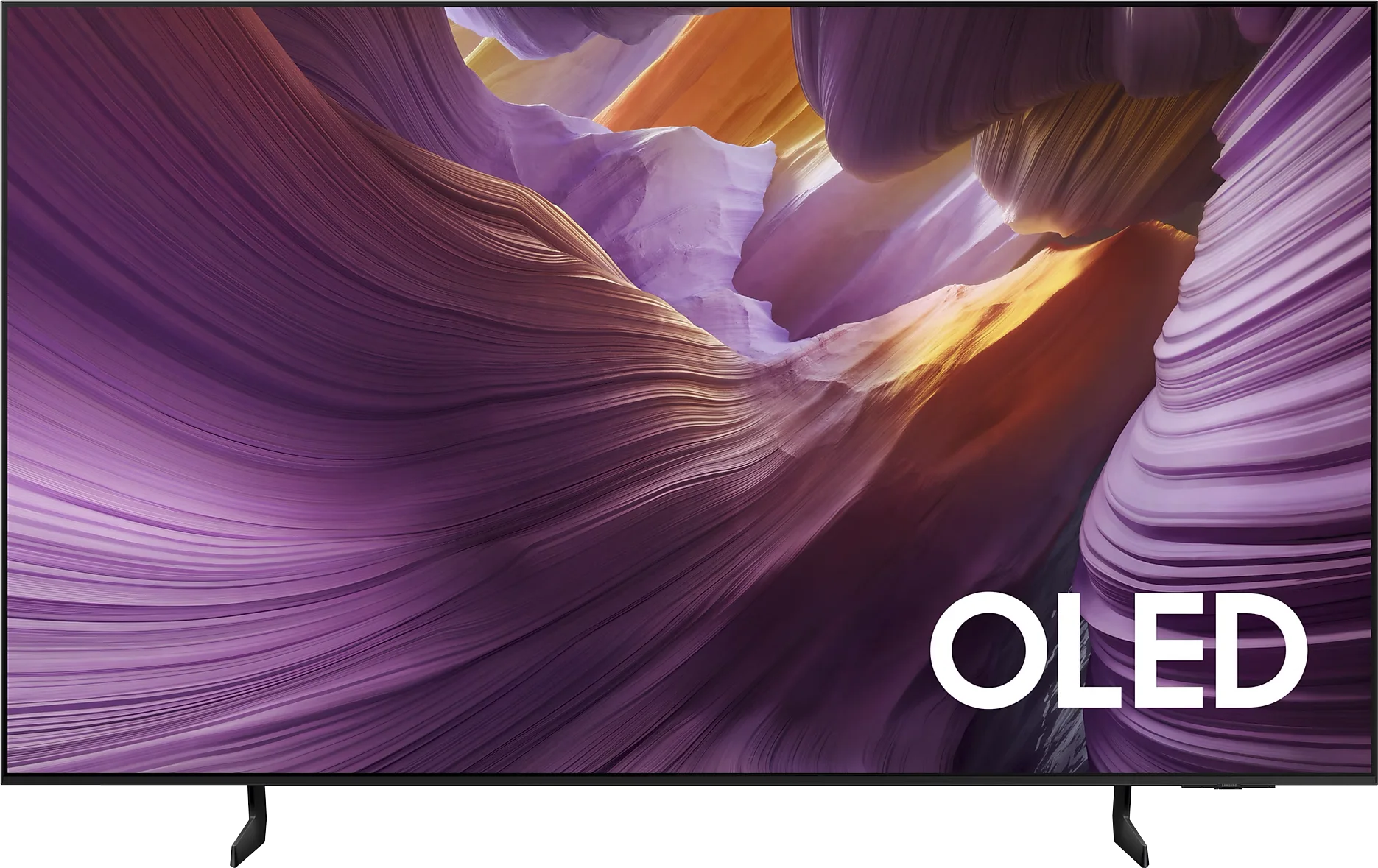
Panel type: LCD VA
Resolution: 3840x2160
System: Google TV
Model year: 2024
Complete the survey to find out the result

Panel type: QD-OLED
Resolution: 3840x2160
System: Tizen
Model year: 2025
Complete the survey to find out the result

Overall rating
6.6
8.0
Movies and series in UHD quality
6.3
8.3
Classic TV, YouTube
6.0
9.0
Sports broadcasts (TV and apps)
5.9
8.8
Gaming on console
8.2
9.3
TV as a computer monitor
8.2
7.6
Watching in bright light
4.7
5.1
Utility functions
7.5
7.2
Apps
9.6
8.7
Sound quality
6.0
7.2
Complete the survey to find out what fits your preferences
Advantages
Frames styled like a picture in the set
Mount included
VA panel with decent contrast
Support for all popular HDR formats, including Dolby Vision and HDR10+
Great for gamers: VRR, G-Sync, ALLM, low input lag
High refresh rate - 144Hz
Free "picture mode"
Support for DTS:X and Dolby Atmos
GoogleTV operating system with the largest app base
Amazing black and contrast
Incredible colour palette coverage thanks to the QD-OLED matrix
Great picture in SDR and HDR content
High colour fidelity after calibration
Very good image smoothness – 120 Hz OLED matrix
Rich set of features for gamers: VRR, Game Bar, low input lag
4 HDMI 2.1 ports with full bandwidth of 48 Gbps
Advanced and smoothly operating Tizen system
Solar Remote with multiple options
Disadvantages
Low brightness
Motion blur issues
No recording function on USB or PiP
Inferior image quality in "art mode" compared to Samsung The Frame
Colours and blacks fade significantly under sunlight
No VESA standard
Software bugs
No recording function on USB and PiP
No Dolby Vision
Slightly cherry black in very strong external light (not noticeable when viewing in cinema conditions)
No HGiG function*
* This function disappeared with the software update 1110.7 – we are monitoring this situation continuously.
Our verdict
Samsung S85F with a QD-OLED panel can surprise – and it surprises very positively. Even before the tests, we didn't think that in the case of TVs that are talked about in the context of "panel lottery," one could come across something that would benefit the user. However, in this case, particularly in the 55-inch version, it has fully succeeded. The QD-OLED panel, as befits organic technology, offers perfect, almost ideal black and contrast in cinematic conditions. The difference lies, however, in the way colours are reproduced – here it is simply outstanding. The colour gamut coverage is impressive, and after a gentle calibration, the colours become almost exemplary. Motion fluidity is equally high. The 120 Hz panel handles both sports and action films excellently. And if someone plans to connect a console to the S85F, they will receive a complete set of advantages: low input lag, variable refresh rate, Game Bar, and full support for HDMI 2.1. In everyday use, we were assisted by the Tizen system – closed, but extremely well-designed. It responds quickly, offers a rich selection of applications, and add-ons such as AirPlay and voice control make it hard to find something more complete in this category. Indeed, the S85F is not without its flaws. However, the balance of advantages and disadvantages is exceptionally favourable here. One could even get the impression that it is one of the best TVs in its price segment.
TV appearance






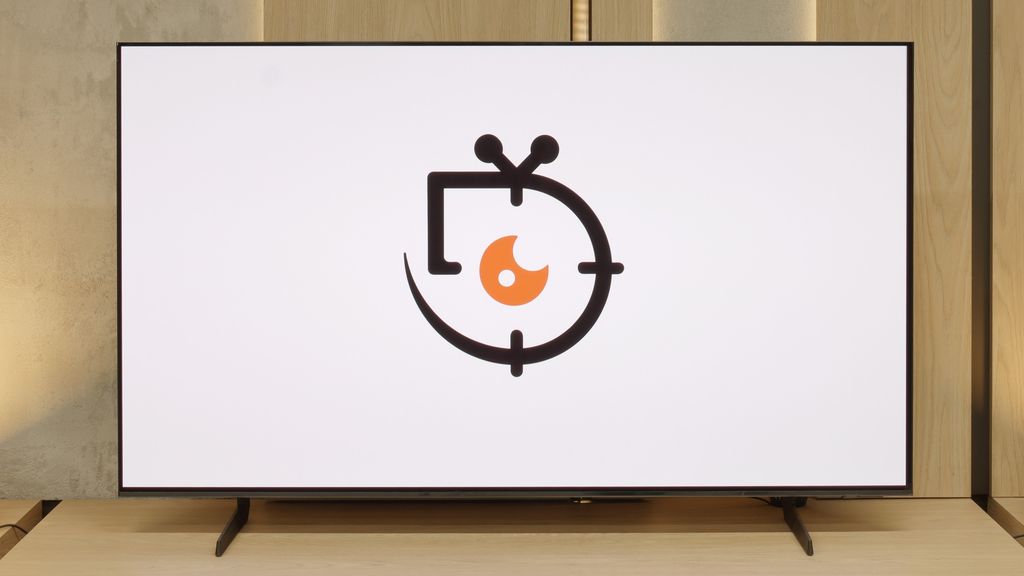

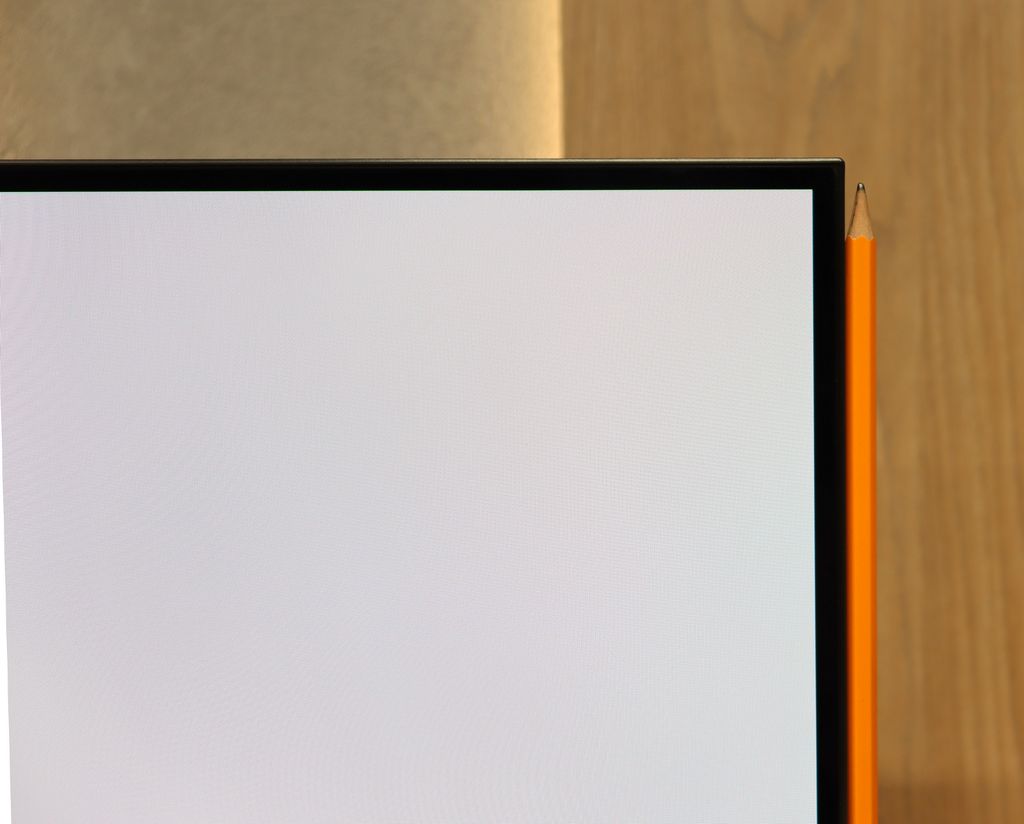
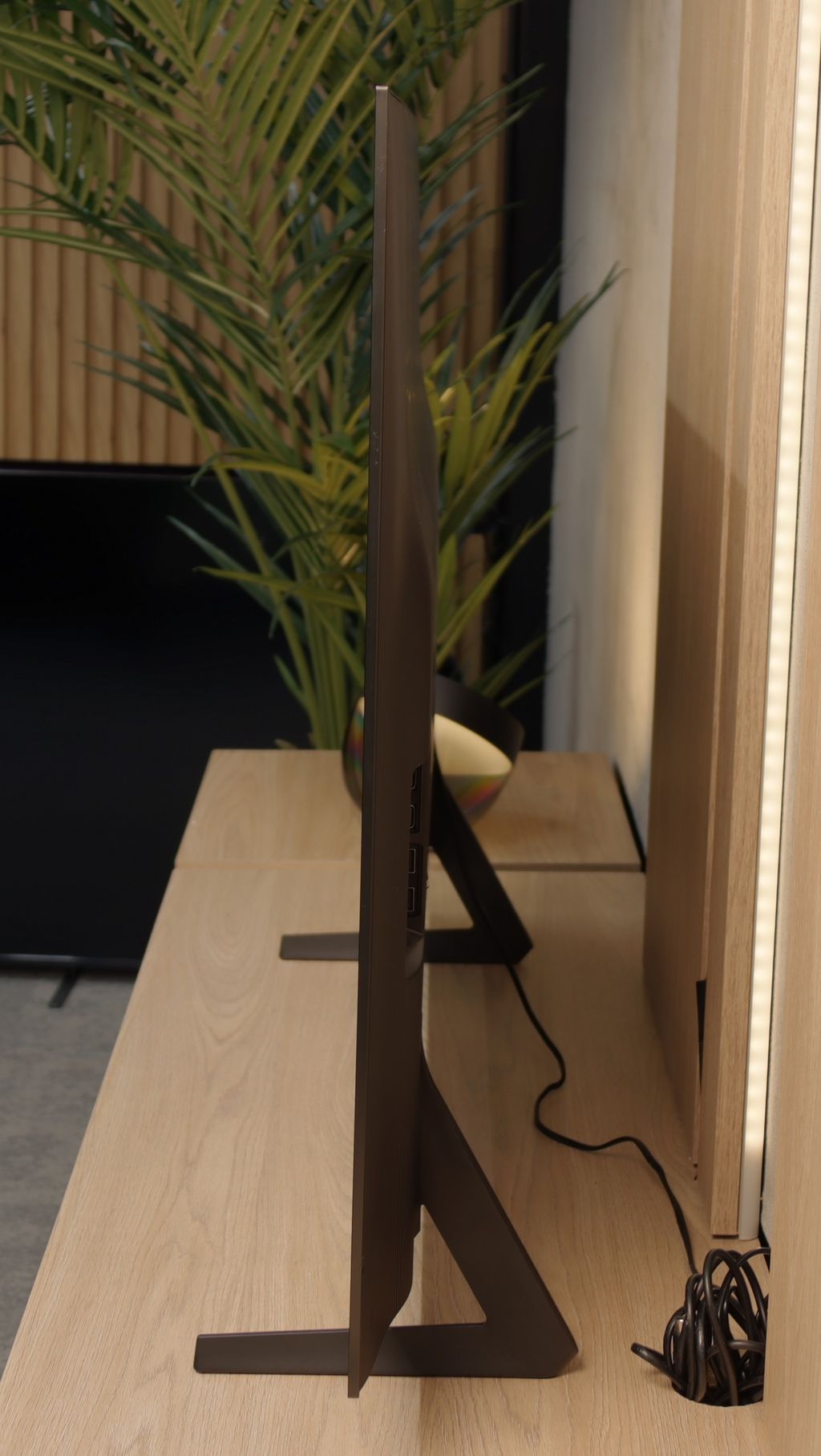
Contrast and black detail
5.5/10
10/10
Local dimming function: No
Contrast:

Result
5,000:1

Result
5,450:1

Result
3,800:1

Result
4,000:1

Result
3,950:1

Result
∞:1

Result
∞:1

Result
∞:1

Result
∞:1

Result
∞:1
Halo effect and black detail visibility:

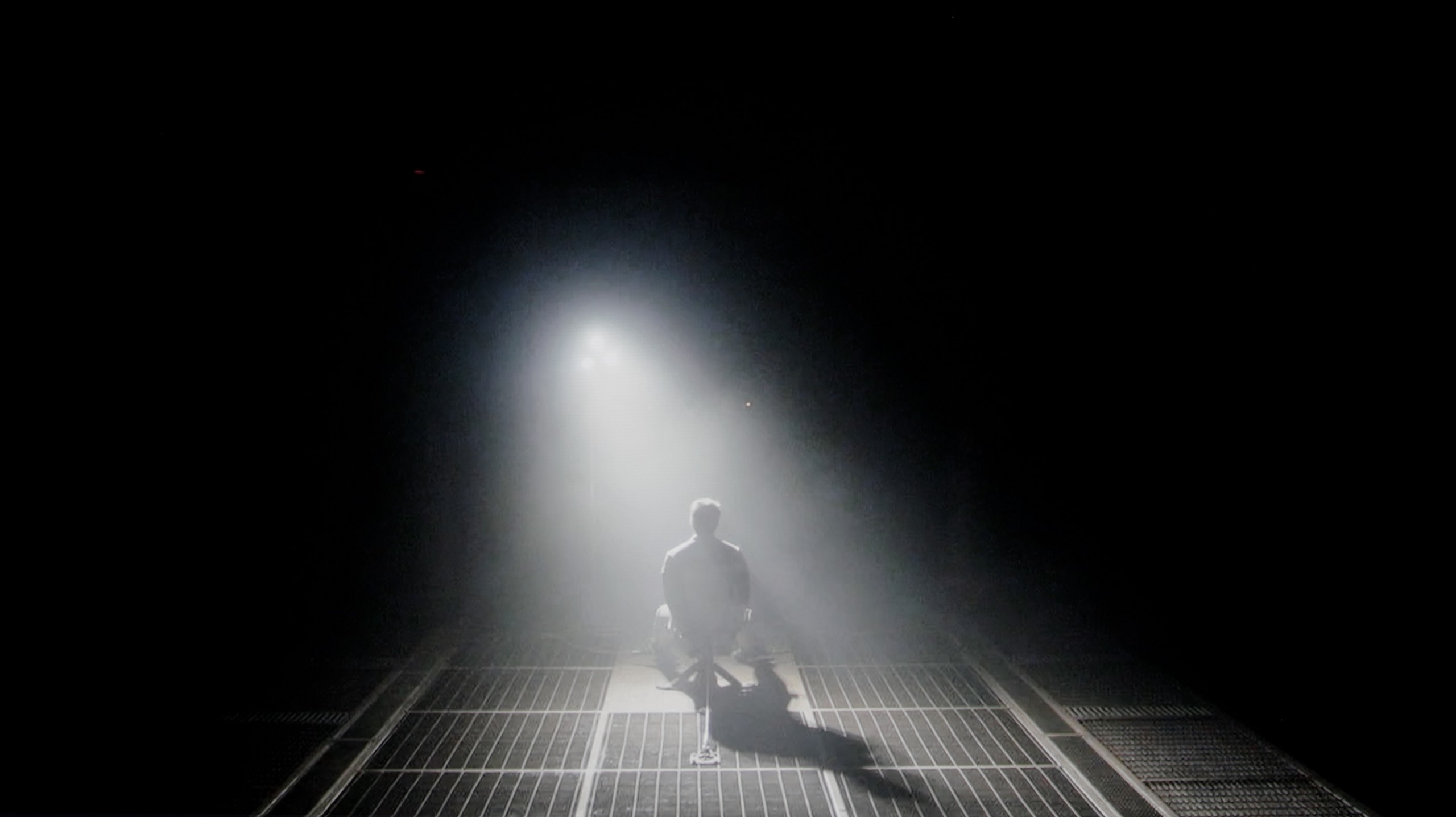
The TCL A300, also known as NXTVision, uses a VA panel, so right from the start, one could expect decent contrast. On our test charts, the television indeed showed typical results for this type of panel – in the best case, the contrast reached around 5000:1, which is not a bad result for this segment.
However, it should be noted that the model is not equipped with any local dimming technology, which unfortunately is noticeable in practice. The black levels, though quite deep at times, often lean towards navy blue or grey – especially in darker scenes. In short: for a television without local dimming, it's not bad, but it cannot be compared to models that already have this feature on board.
The Samsung S85F in the 55-inch version has something exceptional about it – it features a QD-OLED panel. This may sound quite surprising, but it is a fact, at least in Poland. Thus, the question arises: is the difference noticeable compared to last year's S85D with a WOLED panel? Yes, although in this particular test – black levels and contrast – it hardly matters.
Regardless of the scene, the S85F delivers infinite contrast and perfect blacks that we expect from any OLED. These are results that can impress even the most demanding cinema enthusiasts. It's worth remembering that such deep blacks can only be offered by TVs with organic panels – and it doesn't matter whether it's WOLED or QD-OLED. So, if you dream of a screen that can "turn off" the light in a scene just as effectively as an art house cinema in a dark room, the S85F is one of those TVs.
HDR effect quality
5/10
6.2/10
Luminance measurements in HDR:

Result
357 nit

Result
348 nit

Result
338 nit

Result
350 nit

Result
389 nit

Result
666 nit

Result
703 nit

Result
742 nit

Result
732 nit

Result
433 nit
Scene from the movie “Pan” (about 2800 nits)


Scene from the movie “Billy Lynn” (about 1100 nits)


Static HDR10


Dynamic: Dolby Vision
Dynamic: HDR10+


HDR luminance chart:
Samsung S85F OLED
Luminancja HDR
Luminance of RGB colors
TCL A300W NXTVision
Luminancja HDR
Luminance of RGB colors
When it comes to brightness, the TCL A300W is definitely the darkest television among all frame-style models, such as Samsung The Frame or Hisense CanvasTV – and unfortunately, this is immediately noticeable. In our measurements, the peak luminance reached a mere 400 nits, and on test film patterns, this value dropped to 350 nits. This is definitely too little to experience the true “magic” of bright HDR effects. As a consolation – the television is equipped with a PFS LED coating (which is something like QLED), providing very good coverage of a wide colour gamut, both DCI-P3 and BT.2020. In addition, it has full support for all popular HDR formats – HDR10, HDR10+, HLG, and Dolby Vision – which somewhat compensates for the lack of brightness and helps improve the overall perception of content in this quality.
For an OLED, the Samsung S85F can truly shine – literally. Under favourable conditions, it is capable of generating brightness exceeding 750 nits. This is hugely significant, as most films are created with displays reaching around 1000 nits in mind. In practice, this means that in scenes with moderately large, bright elements, the image can look simply fantastic. However, it's not always so rosy. When there is a huge amount of light on the screen – whether it's an expansive, bright background or a whole frame filled with white – the S85F has to tone it down. In such scenes, brightness can drop by even four times. This limitation is well-known to essentially every OLED in this price segment, so we do not consider it a particular shortcoming. However, something that deserves praise and sets this model apart from the competition is its colour gamut coverage. Thanks to the QD-OLED panel, our colourimeter recorded values exceeding 100% DCI-P3 coverage and as much as 86% for the ultra-wide BT.2020 gamut. Such results are hard to find even in televisions costing several times more.
Factory color reproduction
5.9/10
5.5/10


Factory Mode
After calibration
TCL A300 offers several picture modes, but without a doubt, the best is the movie mode. Unfortunately, although it is the best option available, it is not free from errors. In both HD and HDR content, the image has a noticeably too warm hue - it leans slightly towards pink, which is particularly noticeable in scenes with snow. Instead of pure white, we get a pinkish tint that spoils the natural perception of colours.
The management of brightness is also not very good. In the case of older HD material, the image often seems too dark - which is confirmed by the inflated gamma value. Conversely, with HDR content, the effect is the opposite - the image is overly bright, which we observed in scenes from the film Pan. Such a lack of consistency also affects the accuracy of colour reproduction - a test with the ColorChecker showed that many samples clearly deviate from the reference values.
Fortunately, TCL allows for manual adjustment of settings, so we decided to check how the television would perform after our professional calibration. The effects of this adjustment are described below.
Samsung, as befits a manufacturer with ambitions, has equipped the S85F with a mode called Filmmaker. Its task is simple: to ensure that the colours on the newly purchased television are as true to what the director intended as possible. Sounds great… but, as is often the case, a theory that sounds great does not always translate into perfect practice.
In the tested unit, it quickly became apparent that the image – due to an excess of blue and red – looked as though someone had overdone the saturation a bit. As a result, quite significant colour errors occurred, particularly in 4K content. Moreover, there was a problem with brightness – the S85F could brighten most scenes more than it should, taking away their intended mood.
Fortunately, Samsung televisions, including the S85F, offer an impressive number of settings for advanced calibrators. This means that we could test what this panel is truly capable of when placed in the right hands.
Color reproduction after calibration
8/10
9.3/10

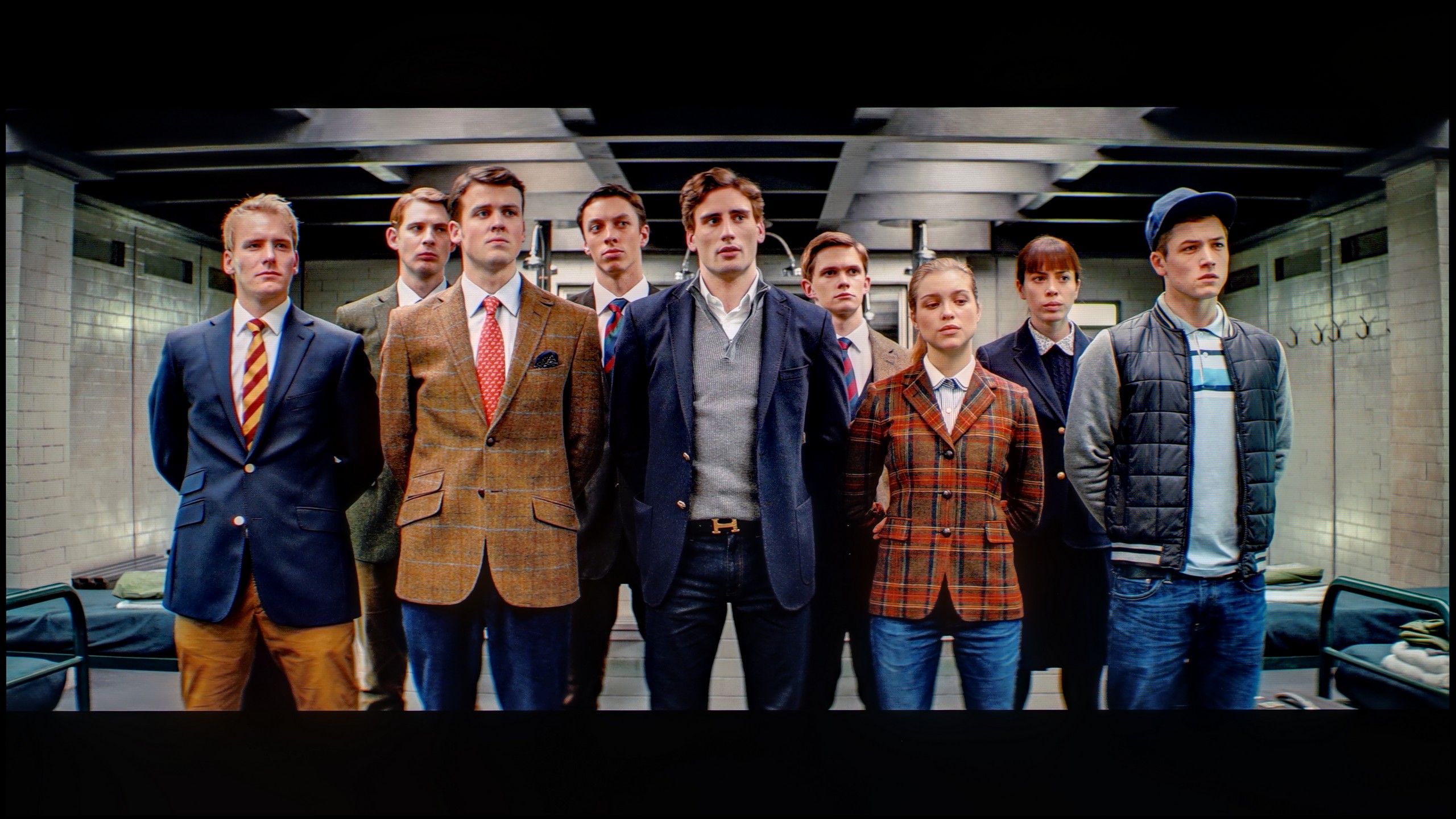


After our professional calibration, the TCL A300 has literally received a new lease of life. The image has stopped being too warm, and the colours finally look as they should – which was confirmed by the ColorChecker test, where the colour samples finally started to hit their marks, at least to some reasonable extent. It was also possible to partially correct the brightness management – the image is now more balanced and less "wobbly" between different types of content. Of course, certain limitations cannot be overcome – a slightly noticeable blooming effect is still present, but that is a characteristic of the technology and not something that can be eliminated even after professional settings.
Generally speaking: after calibration, the A300 performs significantly better and gains a completely new quality.
Thanks to the vast number of settings in the menu, we managed to bring the S85F to nearly an ideal level. The white balance in SDR content? Literally perfect – deviations do not exceed the value of “1”. So we can confidently say that in materials with not very high dynamics, we have an image close to reference here.
In HDR content, slight issues have arisen, but they are not significant in practice – most errors fall below the threshold of perceptibility, which is the value of “3”. We also managed to tame the S85F when it comes to brightness management – the EOTF curve, even in movies, holds an almost perfect line. This is one of those cases where after calibration, you can comfortably forget about the settings and simply enjoy films and series at the highest level.
Smoothness of tonal transitions
8.6/10
7.9/10












TCL A300 NXTVision is another frame-style television that handles transitions of tones really well. It's hard to find distinct bands or sharp transitions between shades of the same colour – the overall appearance is natural and smooth.
However, it must be admitted that among the three tested models (The Frame and S7NQ), TCL performs the worst in this category. In darker and lighter scenes, slight imperfections can be noticed. Nonetheless, looking at it as a whole, for a television in this price range – it presents itself really solidly. It may not be the best of the bunch, but it maintains a very good level.
Thanks to the QD-OLED panel, the colour blending on the S85F performs really very well. It is particularly worth noting how it handles the darkest, most demanding scenes – where most televisions start to struggle, this model operates almost perfectly.
Interestingly, a slight stumble can be noticed in those easier, brighter shots. There is then a minimal banding of colours, but it is so subtle that it is hard to believe it would realistically interfere with anyone's viewing experience.
Image scaling and smoothness of tonal transitions
5.5/10
7/10
Smooth transition function

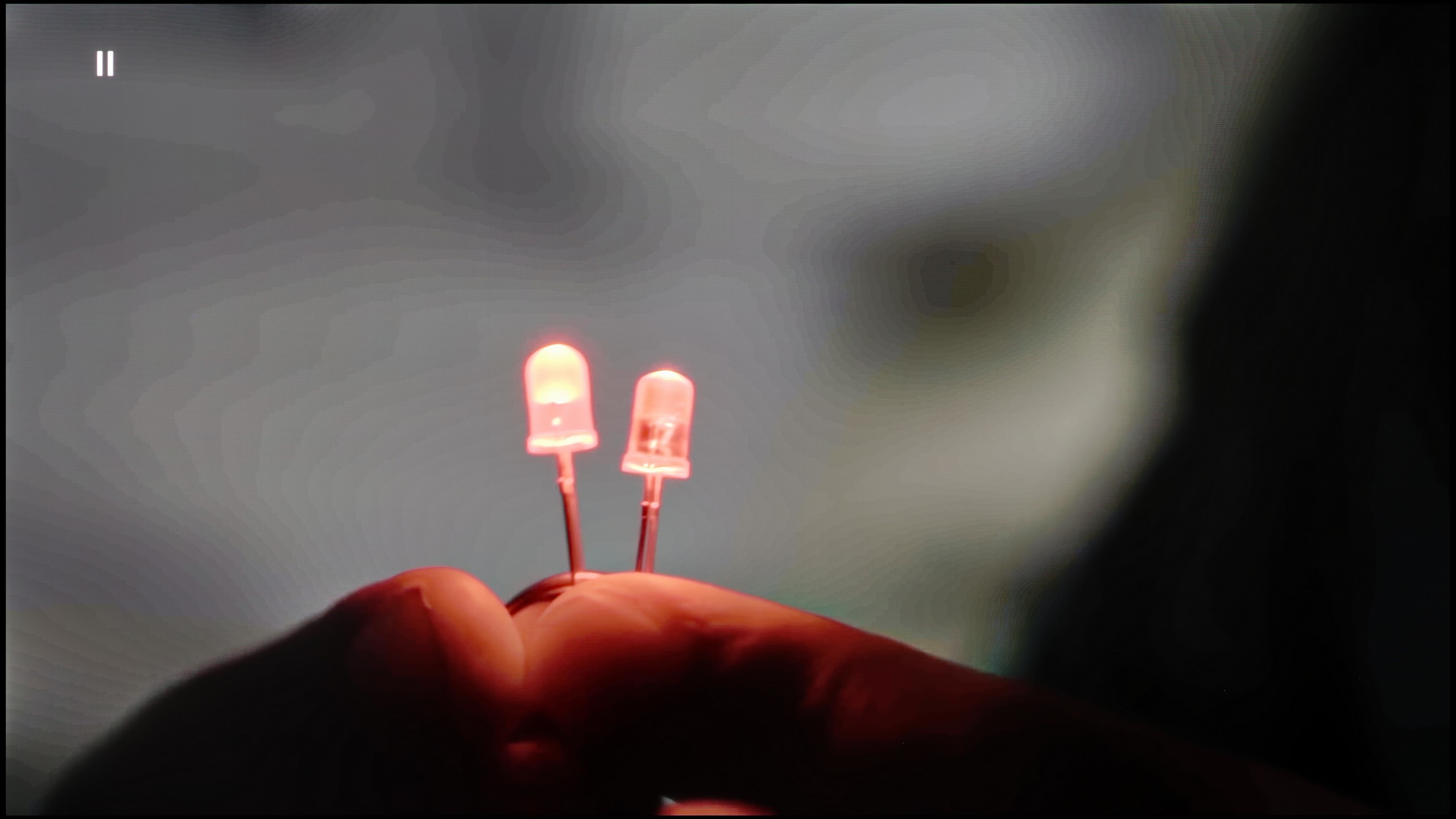
Image without overscan on the SD signal


TCL A300 handles tonal transitions in high-quality films very well, but the question arises – how does it perform with weaker material? The television is equipped with a tonal transition smoothing function, but its effectiveness can be described in one word: "random." In one scene it could work and improve the gradation, but when turned off… the effect remains the same. There is a lack of consistency and predictability.
Image scaling is also not one of A300's strong points. On the test chart, the main character actually looked better than on the raw signal, but with thin lines – such as fonts or background details – there was noticeable jaggedness and aliasing. On the positive side, the television does not crop the image and has no problems with overscan, but the overall quality of scaling is rather average.
The tonal transition smoothing function in the S85F works really effectively – it can completely eliminate the problem of visible banding in very poor quality materials, such as those from YouTube. Unfortunately, even the lowest level of this option comes with compromises. Noise reduction is aggressive enough that it can smooth out the film grain that many of us consider a key element of the cinematic experience. At the "Standard" level, we did not notice that this function removed anything significant from the image, so we can recommend this setting. On the other hand, the "High" level is a different story – it can smooth out not only noise but also subtle, desirable details such as the texture of objects.
As for image scaling, the S85F performs very well. The material looks sharp, and the only minor imperfection is slightly visible aliasing of contours. And there’s still the persistent issue with Samsung televisions – overscan. This can cause the frame to be slightly cropped in certain scenes, which is worth keeping in mind when watching very old content.
Blur and motion smoothness
6.4/10
8.5/10

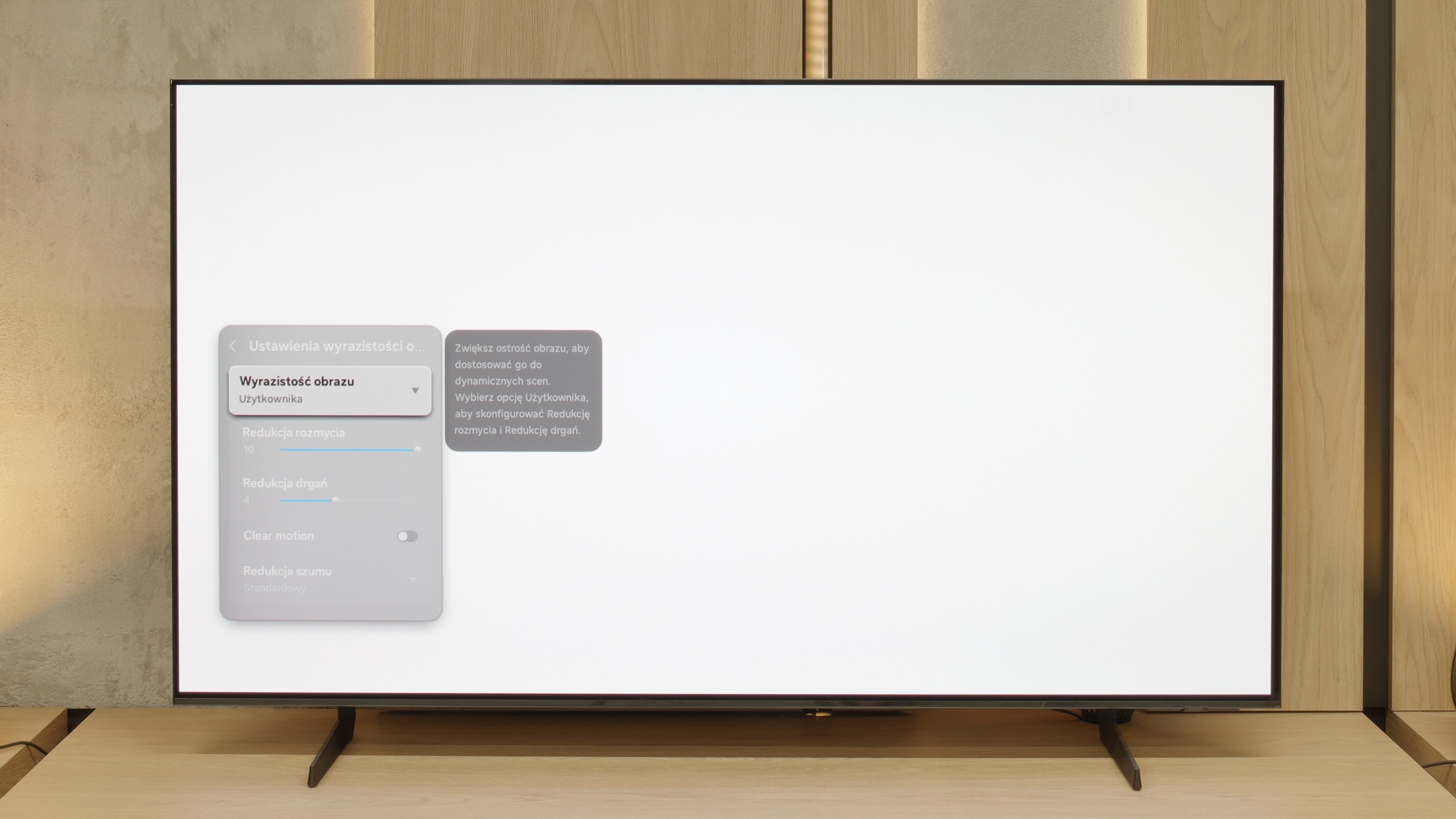
Blur (native resolution, maximum refresh rate):






Blur (BFI function enabled):
Image flickers in this mode



Smużenie ():
Smużenie (4K@60Hz Game Motion Plus):



The TCL A300 is equipped with a 144 Hz panel, which should immediately satisfy practically everyone – both gamers and sports fans. The motion is smooth and the image is clear even during fast-paced scenes. Additionally, the television offers motion enhancement functionality called "Motion," where we find two sliders on a 10-point scale. These allow you to adjust the effect to your own preferences – from a classic, cinematic look with visible frames to a very smooth (though somewhat unnatural) image reminiscent of soap opera effects. This way, everyone can find a setting that suits them.
The S85F is a mind-blowingly fast television – and this is not just an empty phrase for effect. Thanks to the 120 Hz OLED panel, dynamic scenes, whether in games or while watching a live match, look exactly as they should – smoothly, sharply, and without the feeling that something is “slipping away” from the frame. The lightning-fast pixel response time, typical of OLEDs, plays its part here. Transitions between frames are virtually instantaneous, and the picture remains clear even during the fastest camera movements. A ball flying across half the pitch? A car racing in a chase scene? Here, everything is clear and free from the characteristic “trail” of LCDs.
This is exactly what we expect from a good OLED – no compromises when it comes to motion fluidity. The S85F gives the impression that regardless of the pace of the action, we can focus on what is happening on the screen, rather than the imperfections of the image.
Console compatibility and gaming features
9.8/10
8.2/10
- ALLM
- VRR
- VRR range48 - 144Hz48 - 120Hz
- Dolby Vision Game Mode
- Correct implementation of HGIG
- 1080p@120Hz
- 1440p@120Hz
- 4K@120Hz
- Game bar

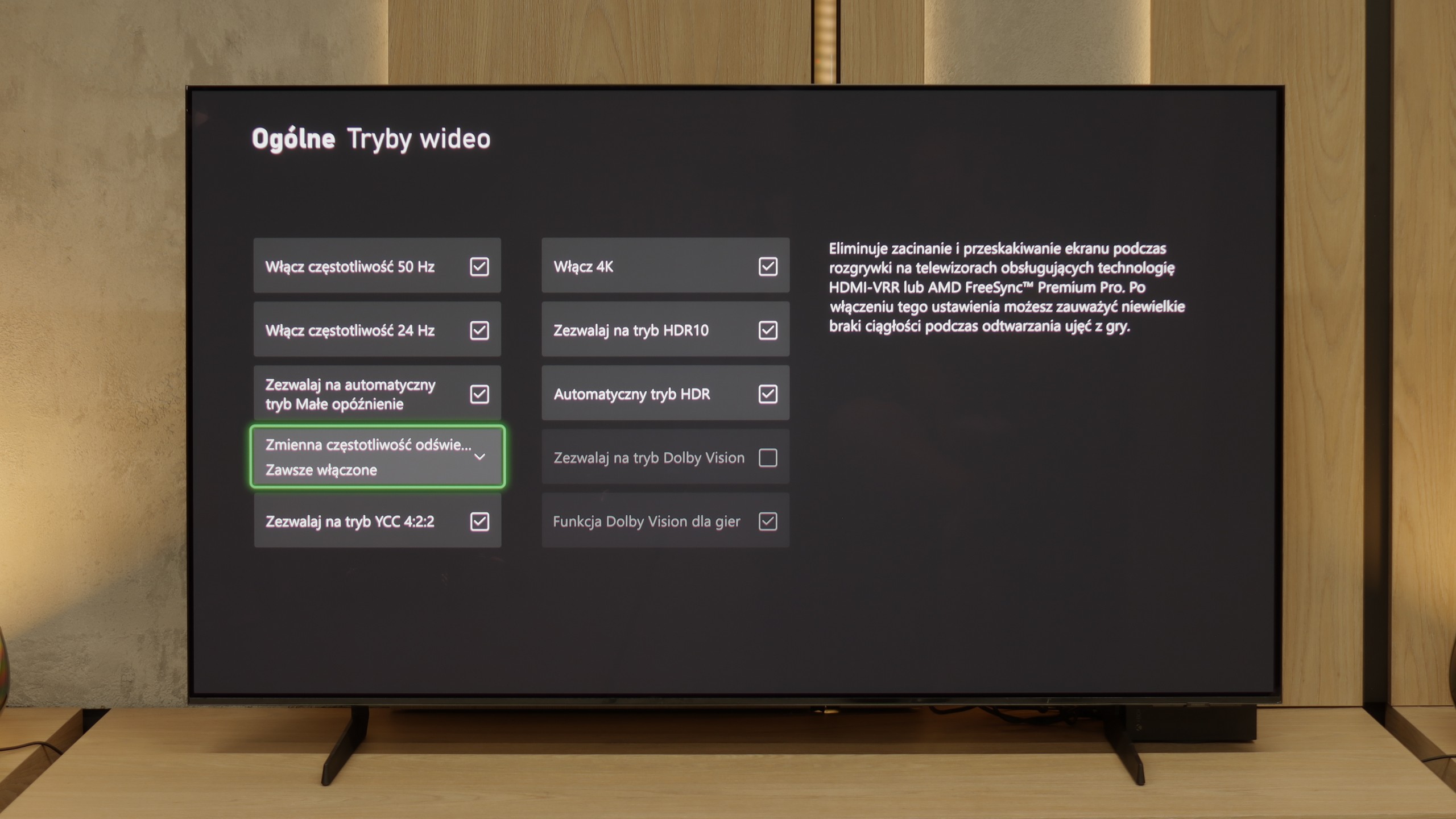

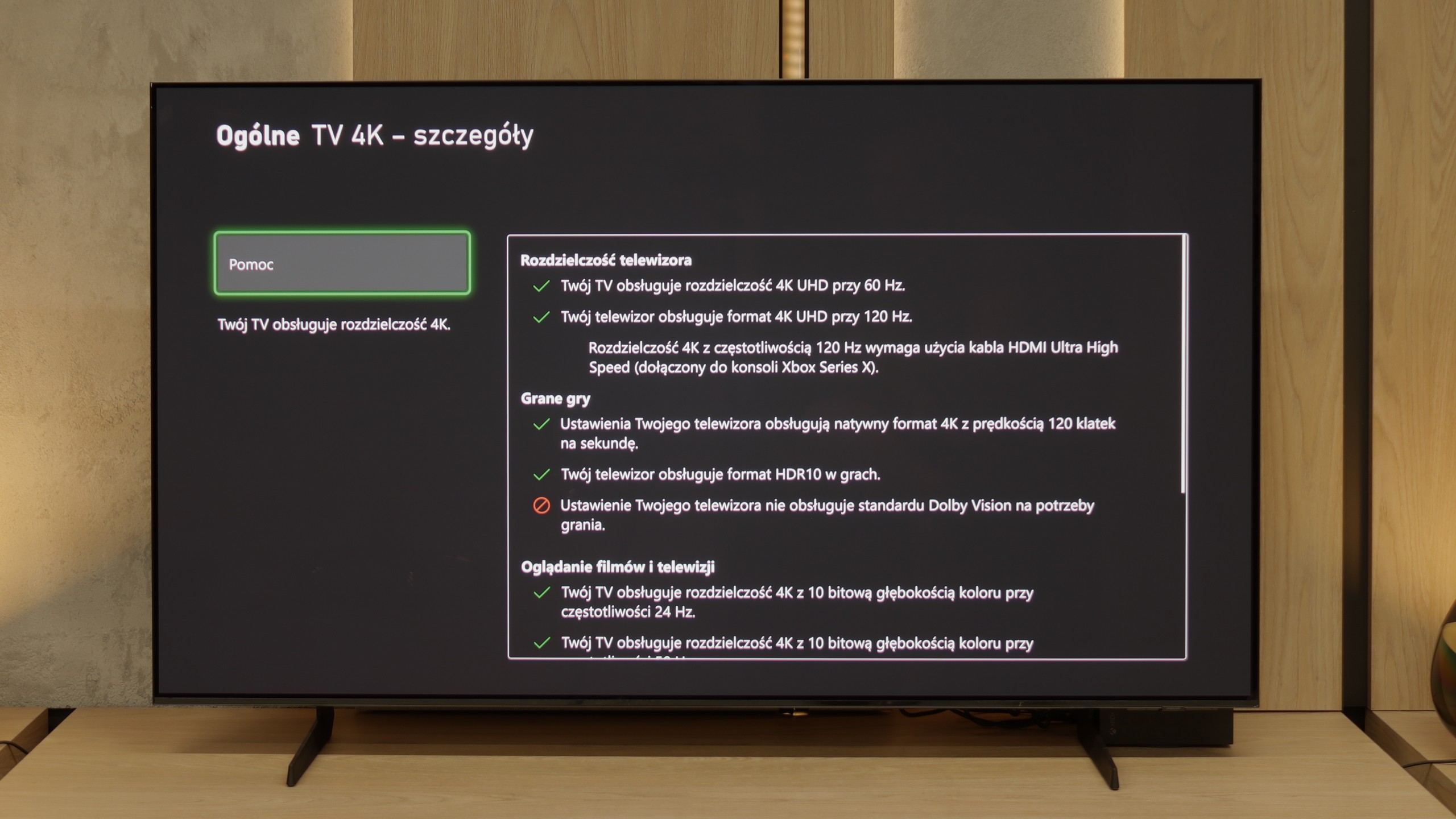

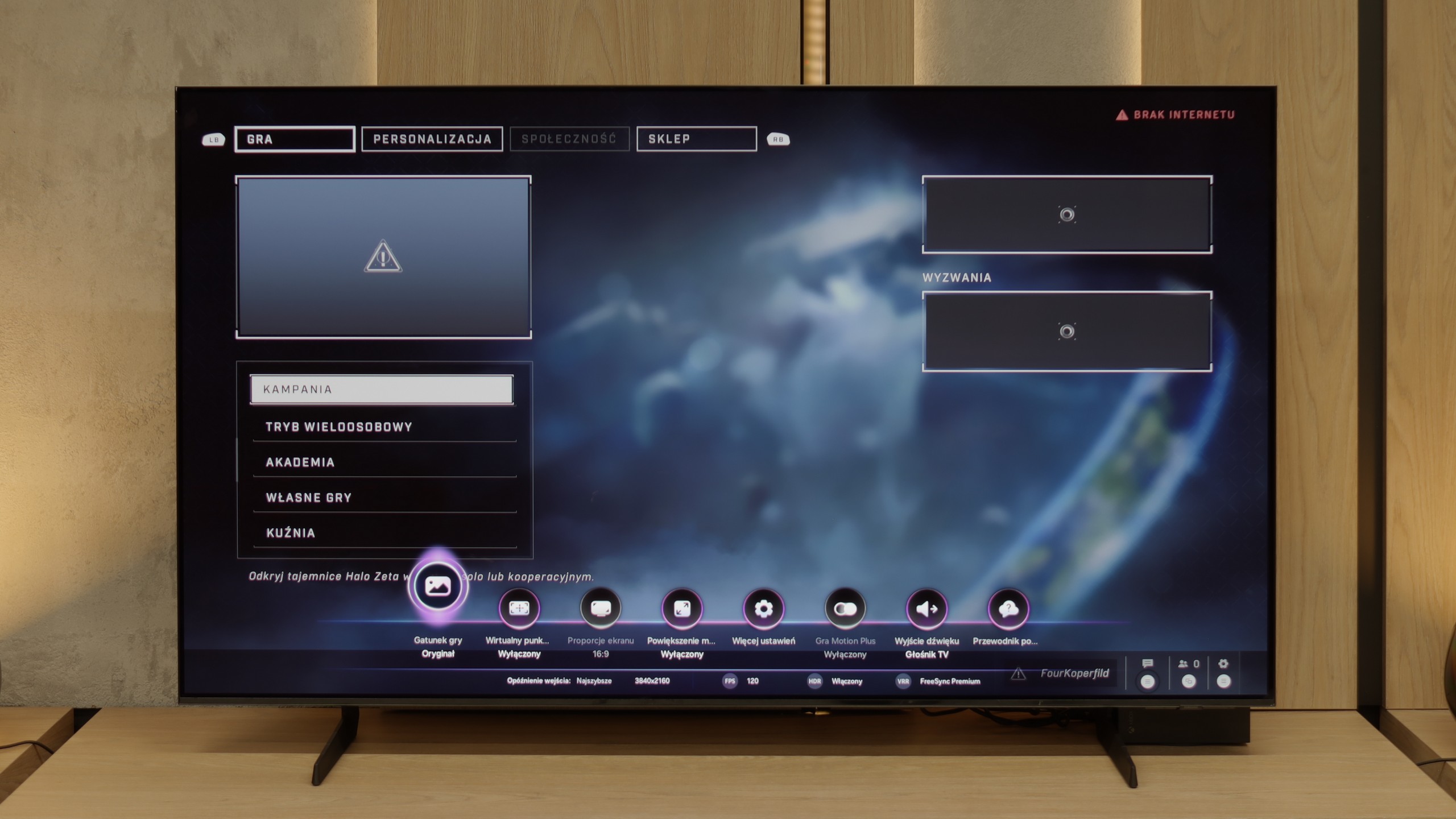

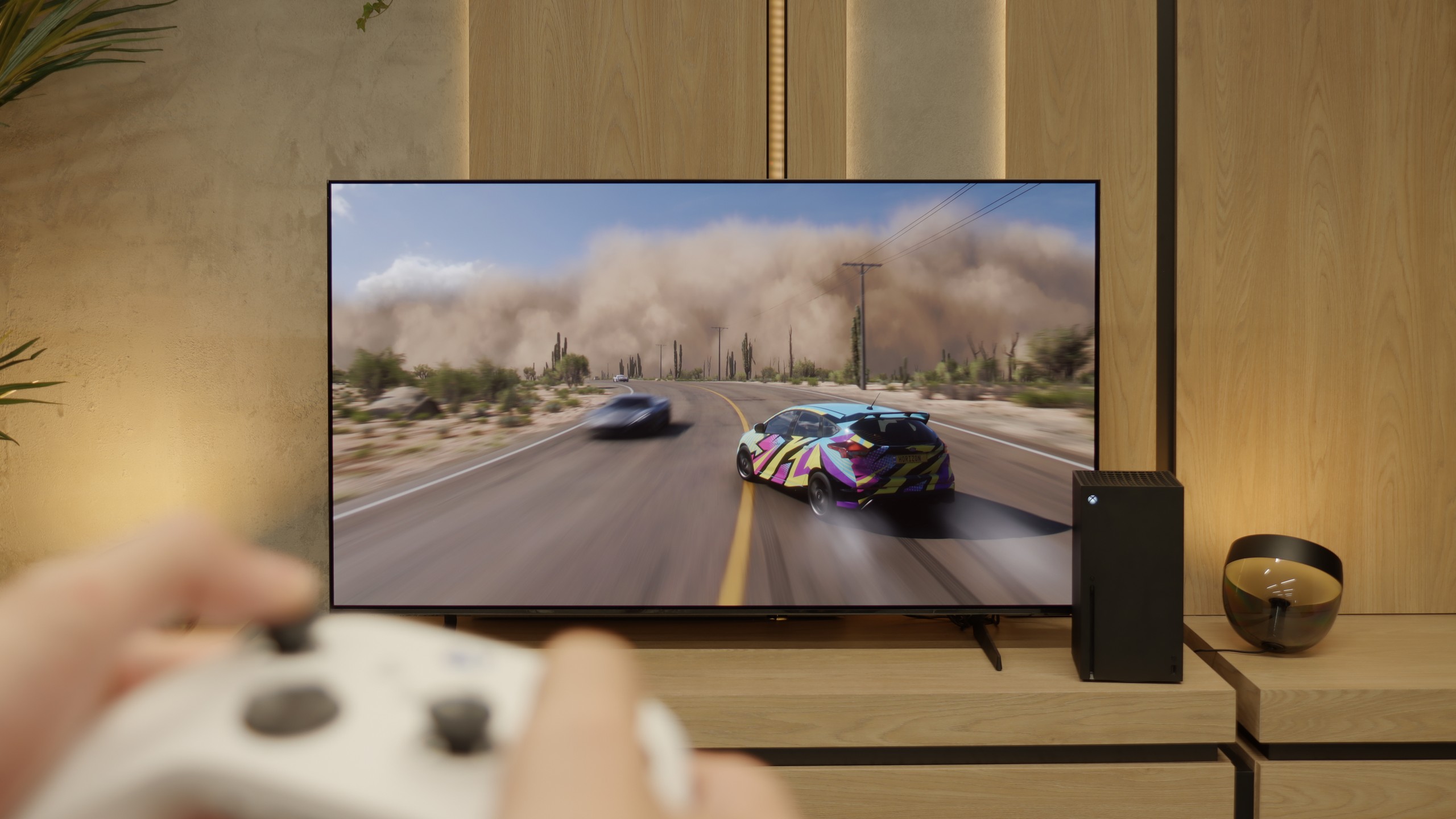
TCL A300 is a television designed not only to transport us to a digital art museum but also to a full-fledged gaming world. Here, we find practically everything one could expect from gaming equipment: two full-bandwidth HDMI 2.1 ports, 144 Hz refresh rate, VRR support, and ALLM.
The proper implementation of the HGIG mode also deserves praise – something that competitor Hisense sometimes struggles with. The television easily handles lower resolutions (e.g., Full HD) while maintaining high refresh rates, which older console or PC owners will appreciate.
In addition, there is an attractive and clear GameBar that facilitates quick access to settings for gamers. The A300 is really well-prepared for top-level gaming – it's just a shame that issues with smearing slightly tarnish its overall image as a gaming device.
The S85F has practically everything on board to become the dream screen for gaming. Four full-fledged HDMI 2.1 ports with a bandwidth of 48 Gb/s, support for VRR, ALLM, a super-detailed Game Bar that clearly shows all parameters – and on top of that, a gem in the form of Game Motion Plus. This motion smoother makes animation in games more enjoyable, while input lag only increases slightly. This is a rare combination, and it’s a big plus for Samsung.
Now comes the moment when we need to complain a little. The lack of Dolby Vision in Samsung televisions has become standard, so there’s no point in hoping (unless something changes in a few years) – but the disappearance of HGiG after the software update is something hard to explain. HGiG (which stands for HDR Gaming Interest Group) is a mode that allows for precise reproduction of brightness in HDR games, in accordance with the creators' intentions. Without it, HDR calibration on a console becomes less precise, so we can end up with an image that is too dark in the shadows or excessively overexposed.
Perhaps Samsung will fix this in the next update – and we have high hopes for that. Because if HGiG returns, the S85F will become nearly the perfect television for gamers.
Input lag
9.7/10
10/10
SDR
HDR
Dolby Vision
In terms of input lag, the TCL A300 performs really well. Values below 10 ms at a refresh rate of 120 Hz are something many gamers dream of – such low lag is practically unnoticeable, both during everyday gaming and in more demanding e-sports titles. One might criticise the result of 23 ms in Dolby Vision mode at 60 frames, but it is still a sufficiently low value that it's hard to have serious objections. In this category, the A300 really excels.
Here, dear players, the S85F shows its claws. 5 ms for 120 Hz content and around 10 ms for 60 Hz are results that can be described in one word in the world of televisions – phenomenal. This means that the reaction to our movements is practically instantaneous. We press the button, and the action on the screen happens without any delay, as if the television is reading our minds. In dynamic games, where a fraction of a second can decide victory or defeat, such values make a huge difference. There is no question of nervously "waiting" for the image to catch up with our movements. The S85F gives us the feeling that everything is completely under our control – and that is how it should be with equipment that aspires to be the perfect screen for gamers.
Compatibility with PC
8.2/10
7.6/10

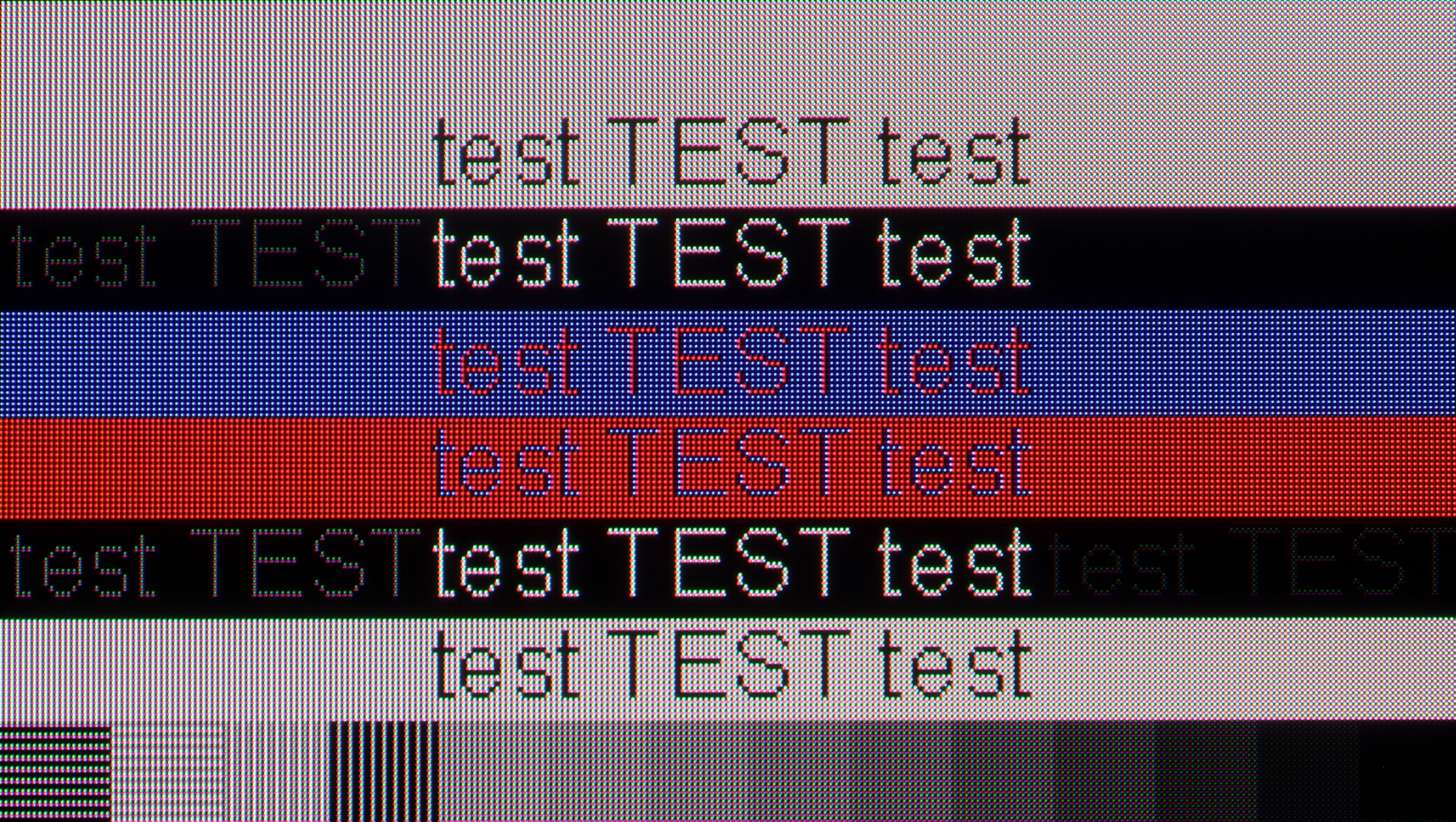
If we plan to use the TCL A300 as a monitor for a computer, we may be pleasantly surprised. The television performs really well in this role. It is equipped with a 144 Hz panel, supports G-Sync, and, as we have already mentioned, offers very low input lag, so gaming on it with a connected PC is a pure pleasure.
Working with text is also possible, though with some limitations. The TCL A300 has slight issues displaying dark fonts and thin lines – this stems from the subpixel structure, which in everyday use can be somewhat bothersome, although it looks better in photos than in reality.
The television supports chroma 4:4:4, but only up to 120 Hz. Therefore, we have indicated that this feature is available, but with a limitation – if we care about perfectly readable fonts, it is advisable to stick to a refresh rate of 120 Hz. At 144 Hz, the sharpness of the text may suffer slightly.
If you are planning to connect the S85F to a computer, we have good news – this television is great for that. Low input lag and a 120 Hz panel make gaming on PC a pure pleasure. Whether we are talking about dynamic shooters or more tranquil RPGs, the response is instant, and the fluidity of the animations can captivate you for hours.
Of course, there's no rose without thorns. Due to the diamond arrangement of the pixels in the QD-OLED panel, there is a slight effect of "rainbow icons", particularly noticeable when sitting close to the screen. Fortunately, this is rather a detail that most of you will not find bothersome in everyday use. Especially since, thanks to the correct implementation of chroma 4:4:4, the readability of fonts is at a very good level – documents, websites, and text editors look exactly as they should.
Viewing angles
3.2/10
9.8/10
The viewing angles on the TCL A300 NXTVision are – let's be honest – mediocre. The television is equipped with a VA panel, which inherently has rather limited angles and unfortunately this is evident here. The video below speaks for itself – even a slight deviation from the axis results in a noticeable drop in contrast and colour saturation. It's a shame that this is yet another frame-style television that has done absolutely nothing about it. After all, we don't always have the opportunity to sit perfectly straight on – especially if the device is also intended to serve a decorative function in the living room.
Here, dear readers, the S85F reaches absolute peak performance. The viewing angles are phenomenal – one of the best you can get in a television today, thanks to the unique QD-OLED panel from Samsung Display. Of course, WOLED panels can also maintain a high level in this regard, but let's not kid ourselves – what the QD-OLED in the S85F demonstrates leaves an even greater impression. The colours, contrast, and brightness remain practically unchanged even when viewing the screen from a very wide angle. This is the kind of television where you don't have to fight for the "best spot on the sofa" – everyone will see the picture in all its glory, regardless of where they sit.
TV efficiency during daytime
4.7/10
5.1/10

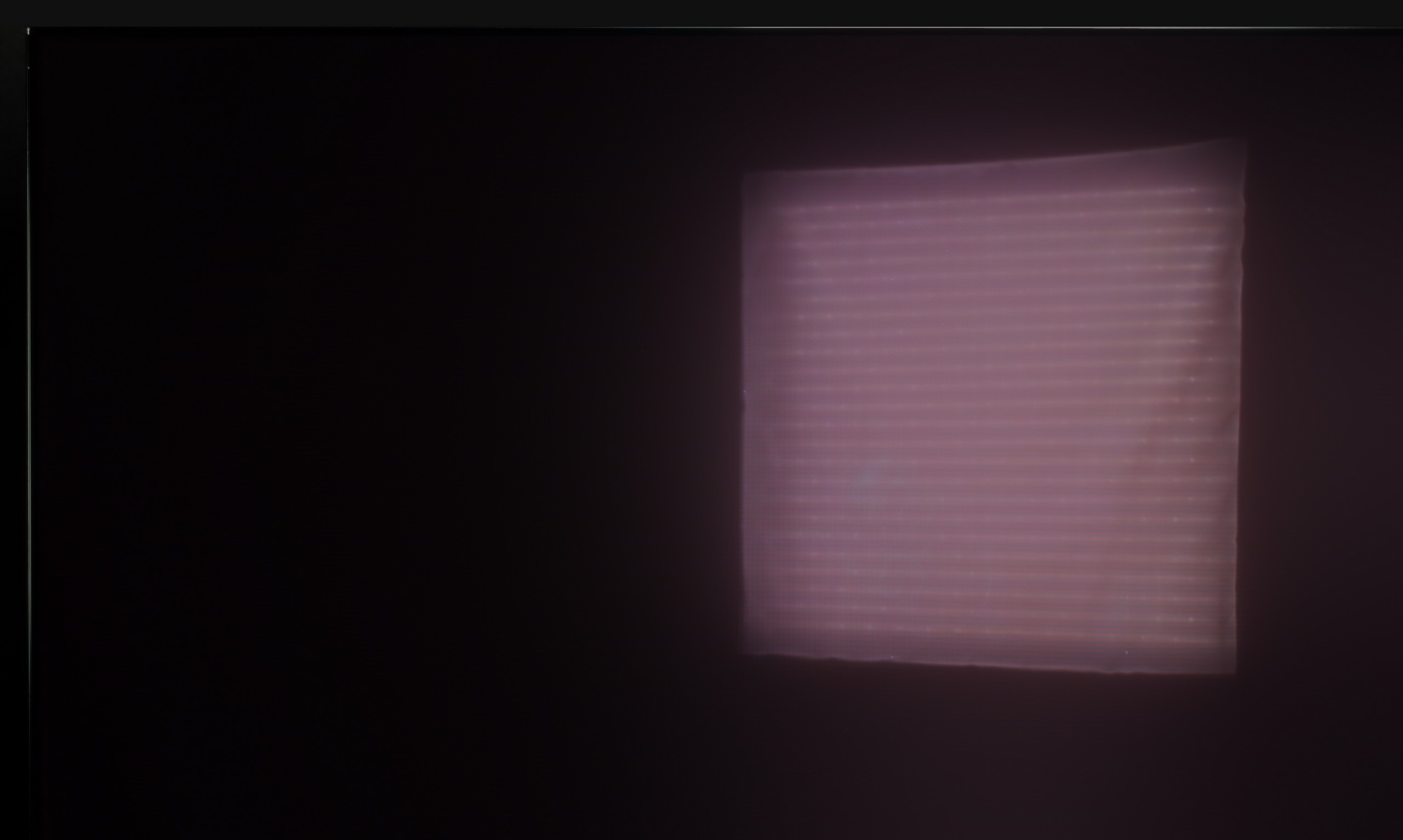


Matrix brightness
Average luminance SDR
Samsung S85F OLED: 317 cd/m2
TCL A300W NXTVision: 388 cd/m2
The TCL A300 NXTVision is equipped with a matte panel very similar to the one found in one of its Chinese competitors – the Hisense S7NQ model. Such a surface handles reflections fairly well, although it must be said that it performs worse than Samsung's The Frame, which offers a significantly higher level in this regard. As is often the case with matte displays, blacks lose their depth during the day and appear more gray than black – and this is no different here. Unfortunately, the fact that the A300 is the darkest television of the three tested does not help either. As a result, it has a real problem standing out in brightly lit rooms.
We really liked the saying “there's no rose without a thorn” and it fits perfectly with QD-OLED display televisions. Especially when we look at their behaviour in strongly sunlit conditions. As you may notice, in very intense light, the surface of the panel can take on a slightly cherry hue. The effect is subtle in the case of the S85F, but in extreme lighting conditions, the black can perform a little worse than in WOLED panels. However – and this “however” is key here – QD-OLED significantly better suppresses direct light reflections. This means that reflections will be less bothersome, and the picture will maintain clarity even when something bright reflects off the screen. You win some, you lose some.
As for brightness, the S85F is a moderately bright OLED. It is not a model designed for extremely sunny living rooms. If you are planning to place it in a very bright room, we recommend considering blinds or placing it in a location that at least partially protects it from direct light.
Details about the matrix
Subpixel Structure:

Panel uniformity:

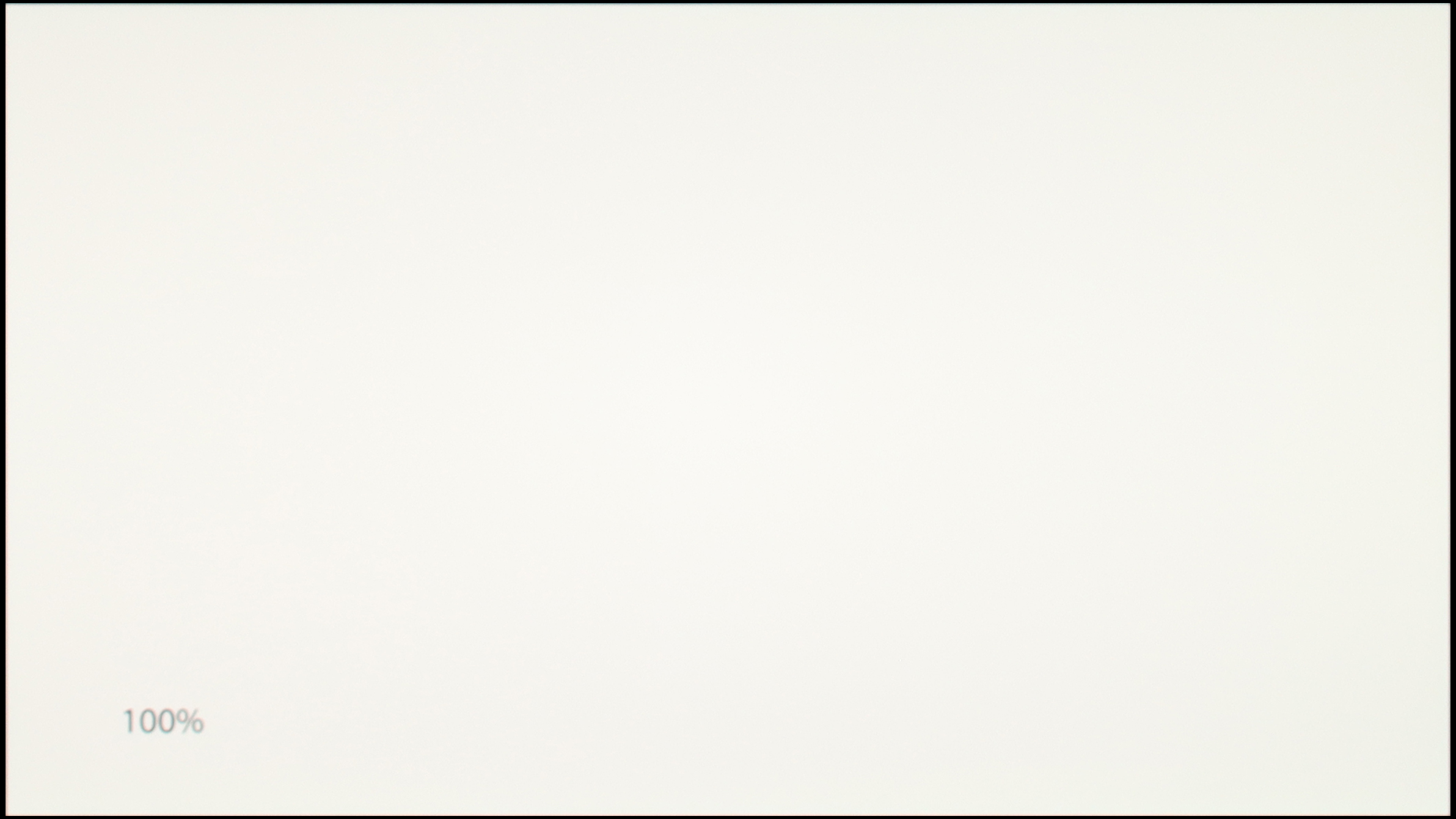
TCL A300W NXTVision
Samsung S85F OLED
TV features
7.5/10
7.2/10
- HDMI inputs2 x HDMI 2.0, 2 x HDMI 2.1 48Gbps0 x HDMI 2.0, 4 x HDMI 2.1 48Gbps
- Other inputsToslink (Optical audio)
- OutputsToslink (Optical audio), eARC (HDMI), ARC (HDMI)Toslink (Optical audio), eARC (HDMI), ARC (HDMI)
- Network InterfacesWi-Fi 2.4GHz, Wi-Fi 5GHz, Ethernet (LAN) 100MbpsWi-Fi 2.4GHz, Wi-Fi 5GHz, Ethernet (LAN) 100Mbps
- TV receptionDVB-T, DVB-T2, DVB-S, DVB-S2, DVB-CDVB-T, DVB-T2, DVB-S, DVB-S2, DVB-C
Classic features:
- Recording to USB (terrestrial TV)
- Recording programming
- Picture in Picture (PiP)
- RF remote control (no need to aim at the screen)
- Backlit remote control
- Teletext
- Audio only mode
- Possibility to connect Bluetooth headphones to the TV
- Possibility to simultaneously use Bluetooth headphones and the TV speaker
Smart features:
- AirPlay
- Screen mirroring (Windows Miracast)
- Wyszukiwanie głosowe
- Voice search in native language
- Ability to connect a keyboard and mouse




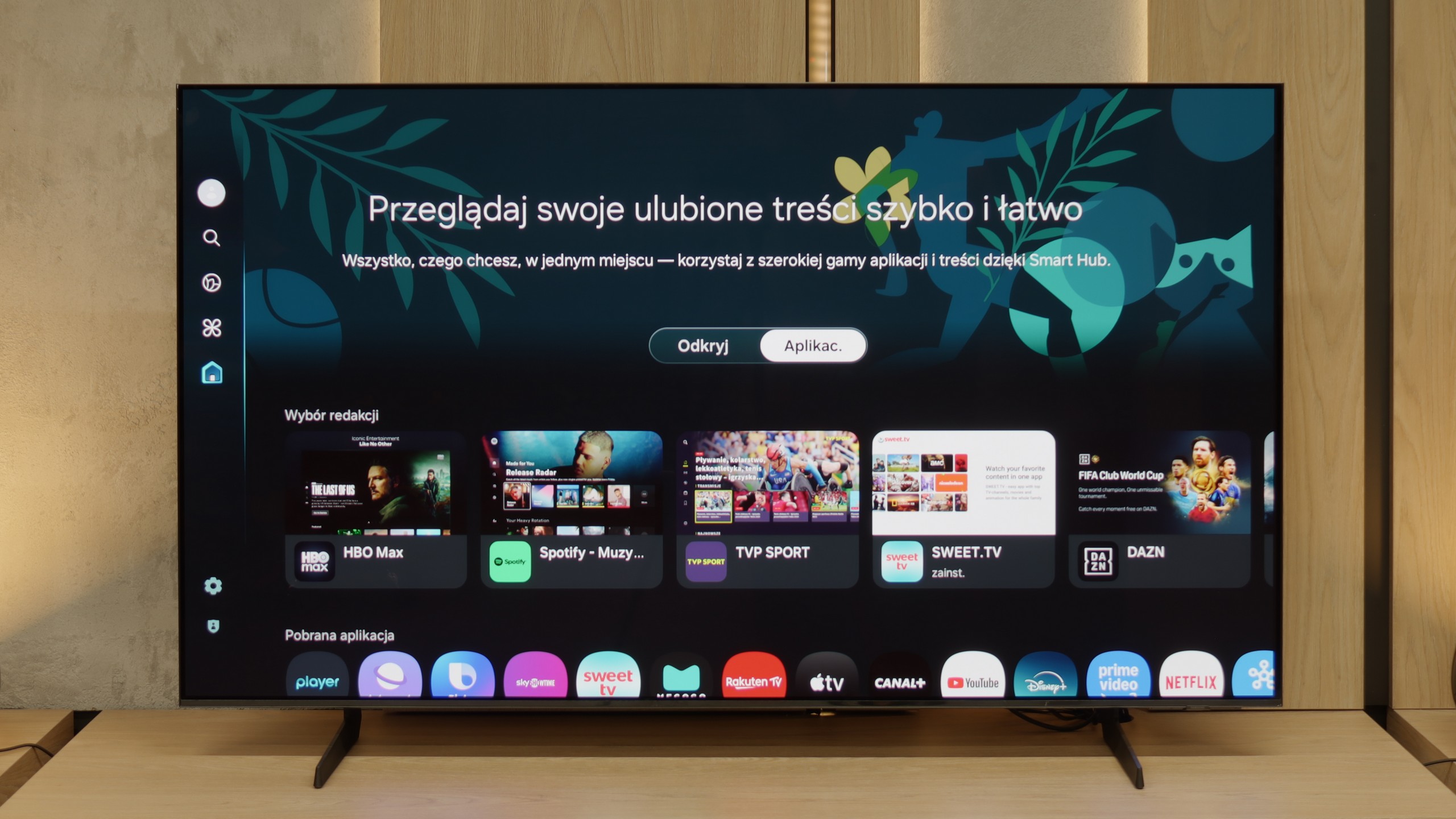
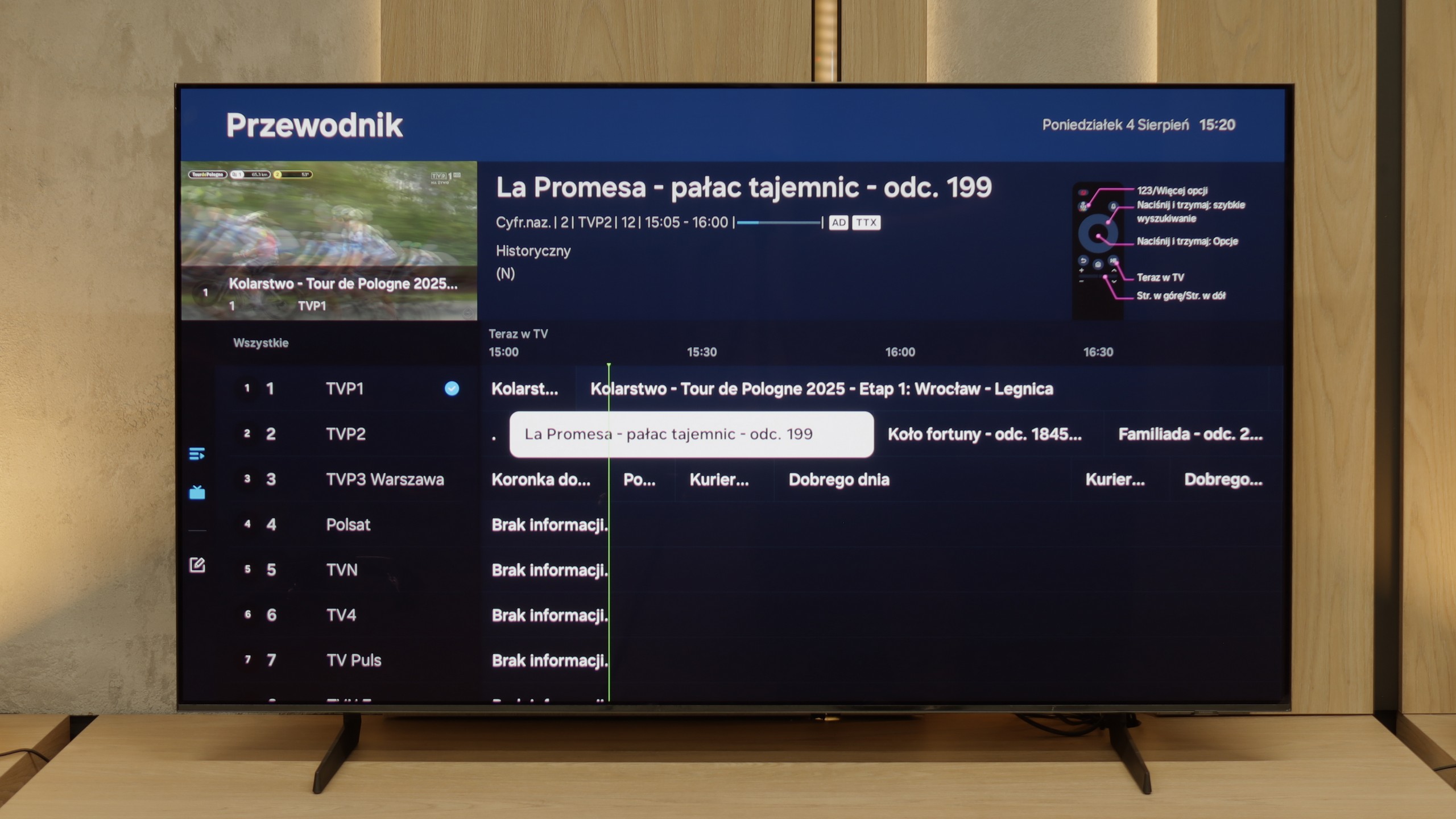
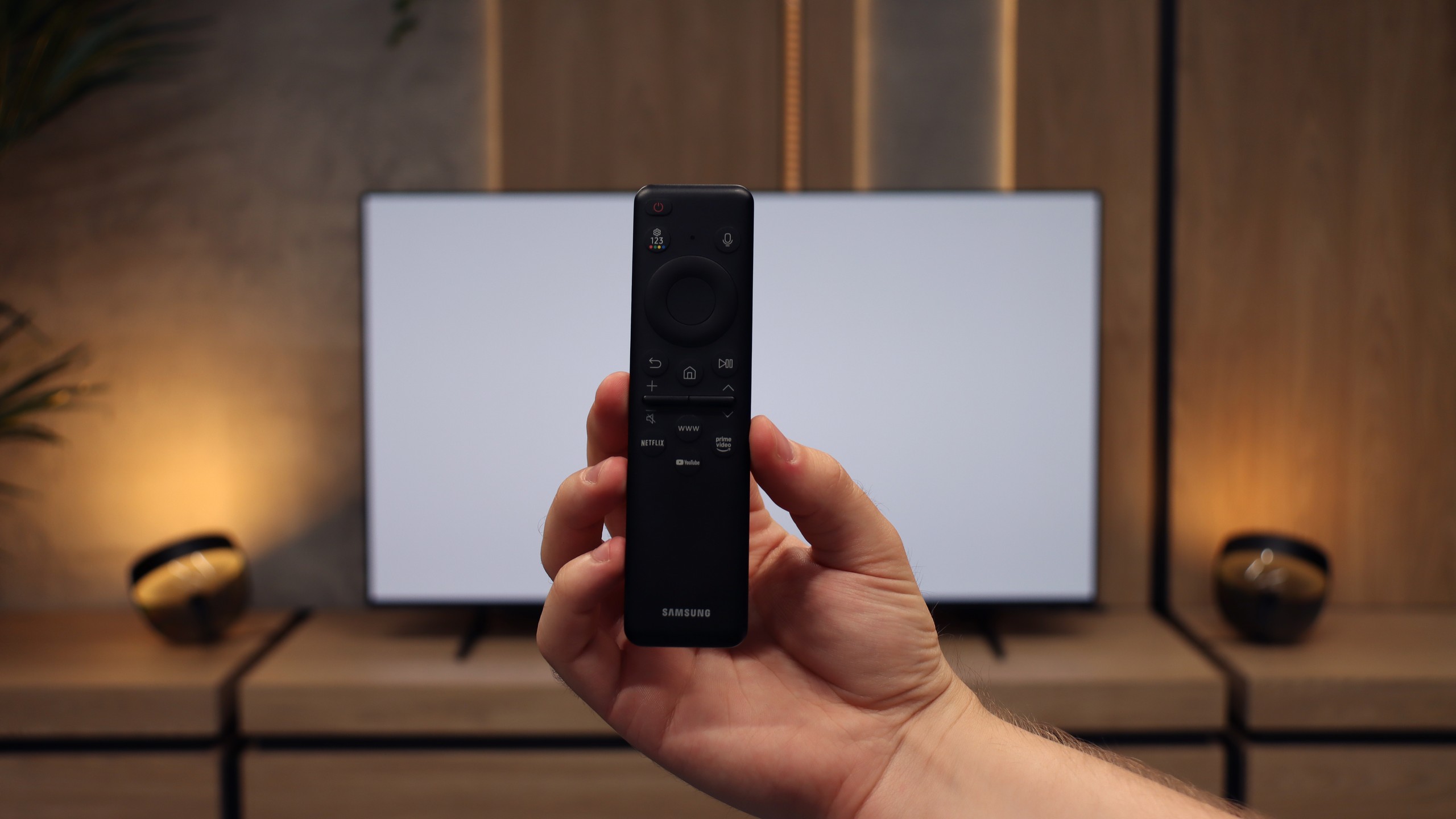

The TCL A300 is a television styled to resemble a painting, which can successfully masquerade as a work of art during everyday use, hanging on the wall. It is equipped with a special image display mode, additional frames in a light wood tone, and a flat wall mount that allows the television to be hung like a true picture – flush against the wall.
A significant advantage of the image mode is that it is completely free. We have access to dozens of works from which we can choose the one to be displayed in standby mode – instead of a black screen, the picture we selected remains on the wall. The quality of the graphic reproductions is decent, but it must be admitted that it clearly falls short of that from the Samsung ART Store. Although access to images there is paid, the quality of the scans is significantly better – you can see the texture of the paint, the canvas, and the details. In the TCL A300, it resembles high-quality photographs more than realistic reproductions of artworks. Additionally, the implementation of the image mode in the system leaves much to be desired. For example – if we set the brightness in image mode to 10%, that same value automatically transfers to the normal viewing mode, where we could comfortably set the brightness to 50% or even 100%. This works in the opposite direction too – when we set the brightness to 100% in normal mode, switching to gallery mode displays the images with that same maximum brightness, shining too intensely and losing the entire effect of a “picture on the wall.” These are minor but annoying errors that can ruin the experience of what was intended to be visually subtle and elegant.
Moving on to more classic features – the A300 runs on the Google TV system, which currently offers by far the largest selection of applications (the full list available below). The well-functioning voice assistant with support for the Polish language is also a major plus. As standard – as in most TCL televisions – the USB recording function or picture-in-picture (PiP) mode is missing.
Classic TV Features of the S85F
The S85F was not really designed with fans of traditional television in mind. There’s no PiP feature (which is a bit surprising as Samsung usually offers it) nor the ability to record programmes to USB from the built-in tuners. Fortunately, the basics are present – teletext and a clear channel guide – so for regular, everyday viewing, that is more than enough. The included remote control, although simple and lacking a numeric keypad at first glance, allows you to control multiple devices. This means that when connecting, for example, a Canal+ decoder, you don’t need to have two remotes on the table – the one for the television is quite sufficient.
SmartTV S85F: Tizen
The smart part is a completely different story. Tizen is one of the most advanced operating systems in televisions. It operates smoothly, supports all popular internet functions – from screen mirroring, through AirPlay, to voice search. The strongest feature of Tizen is its integration with the SmartThings app, which can serve as the control centre for the entire home. Of course, like any closed system, Tizen has its limitations – for example, in the form of a smaller app library compared to GoogleTV. However, looking at the current list of available apps, it is hard to pinpoint anything that might actually be missing.
Playing files from USB
8.9/10
9.1/10
Supported photo formats:
Maximum photo resolution:

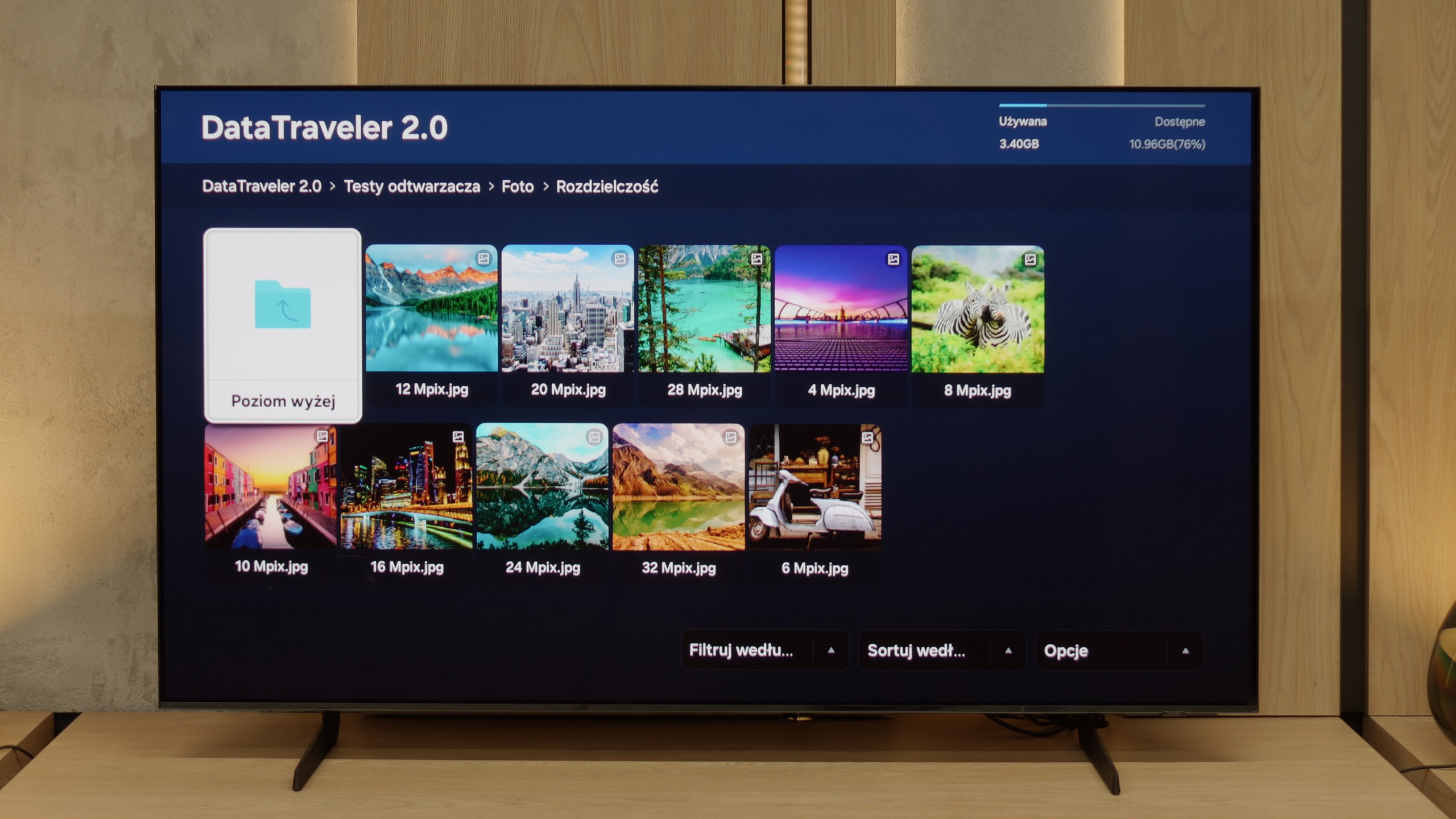
The built-in player in the TCL A300 works as it should – most popular video and photo files play without any issues. There is a lack of support for the HEIC format from Apple (which is quite common in many televisions), but most users still use AirPlay, so this shouldn't be a major problem. If someone is not satisfied with the default player, the Google TV system offers considerable options – it's easy to install an alternative app that better suits our tastes. Nevertheless, it must be acknowledged that the factory solution is entirely sufficient for everyday use.
The built-in media player in the S85F performs excellently – practically everything you put on a USB drive or hard disk will be played back without the slightest problem. Minor shortcomings appear only in the handling of some less popular photo formats, but for the vast majority of you, this will be more than sufficient. So, it can be confidently stated that for home use, the built-in player is more than solid.
Apps
9.6/10
8.7/10














































Sound
6/10
7.2/10
- Subjective sound quality:6/107.2/10
- Dolby Digital Plus 7.1:
- Dolby True HD 7.1:
- Dolby Atmos in Dolby Digital Plus (JOC):
- Dolby Atmos in Dolby True HD:
- DTS:X in DTS-HD MA:
- DTS-HD Master Audio:
When it comes to sound, the TCL A300W – like its competitors – plays quite... flat, after all, we are talking about a super flat television. For everyday watching of news or series, this level is entirely sufficient, but during film screenings, we may clearly miss depth and space. On the plus side, it is worth noting that the television supports both Dolby Atmos and the increasingly rare DTS:X – which offers more options when connecting an external audio system. It is also worth mentioning that the A300 PRO model has been equipped with a dedicated, flat soundbar. And not just any soundbar – it performs better than most of the televisions we have tested.
Built-in speakers with a power of 20 W on paper may not make a big impression, but in practice, the S85F can surprise. It sounds really pleasant, and at times you can even catch a subtle bass, which is not a given in this class of speakers. The TV does not support DTS format, which has unfortunately become the standard for most manufacturers by 2025. A nice surprise, however, is the support for Dolby Atmos. Of course, talking about "spatial" sound in the case of two speakers placed at the bottom of the casing would be a slight exaggeration, but it's good that Samsung offers such a feature in this model at all.


